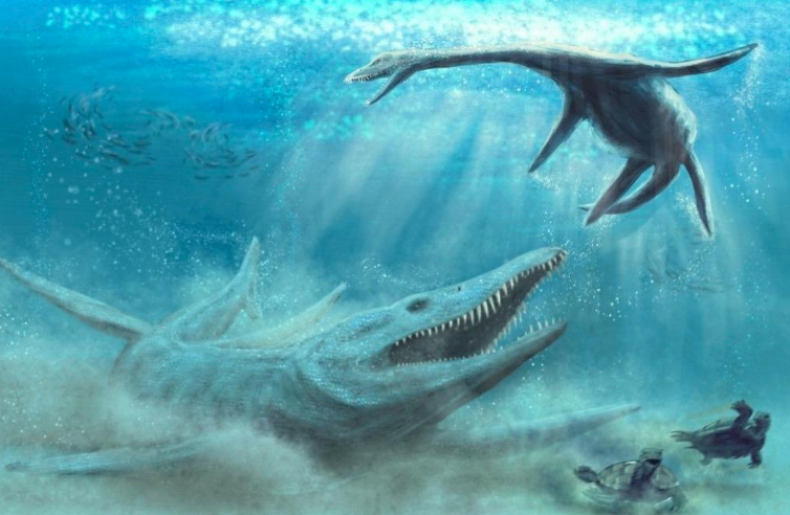Paleontologists at the Polish Academy of Sciences have found the partial remains of a 150 million-year-old sea monster—formally known as a pliosaurus—in a cornfield. The discovery was made near the village of Krzyżanowice in the Holy Cross Mountains of Poland.
“In Europe, they have been discovered only in a few countries, never before in Poland,” Daniel Tyborowski from the Museum of the Earth of the Polish Academy of Sciences in Warsaw, Poland, said in a press release.
A study, published in the Proceedings of the Geologists’ Association, describes the fossilized remains of a surprising assemblage of creatures from the Late Jurassic period, including the skull and teeth fragments from a large pliosaurus.
Dating reveals the fossils are between 145 and 163 million years old, when pliosaurs—a group of long, flippered reptiles—were top of the marine food chain.
These animals could swallow prey whole and reached lengths of 33-feet. To this day, they remain one of the largest predators to scour the world’s oceans, according to the University of Oslo’s Natural History Museum.

Pliosaurs existed in the Triassic and Jurassic Period and went extinct at the same time as the dinosaurs, 66 million years ago during the Cretaceous–Paleogene extinction event—as did another group of marine predators, the plesiosaurs, remains of which were also found at the Krzyżanowice site.
Bones from a long-necked species of plesiosaur belonging to the Elasmosauridae family and teeth from ancient crocodiles (or crocodylomorphs) were described in the study, along with the shell fragments of ancient turtles.
“Sea turtles ate large snails, while they themselves fell prey to large crocodiles,” said Tyborowski. “We know this because we found teeth marks left by those reptiles on turtle shells. On the other hand, powerful pliosaurs hunted all animals whose fossils we discovered at this site.”